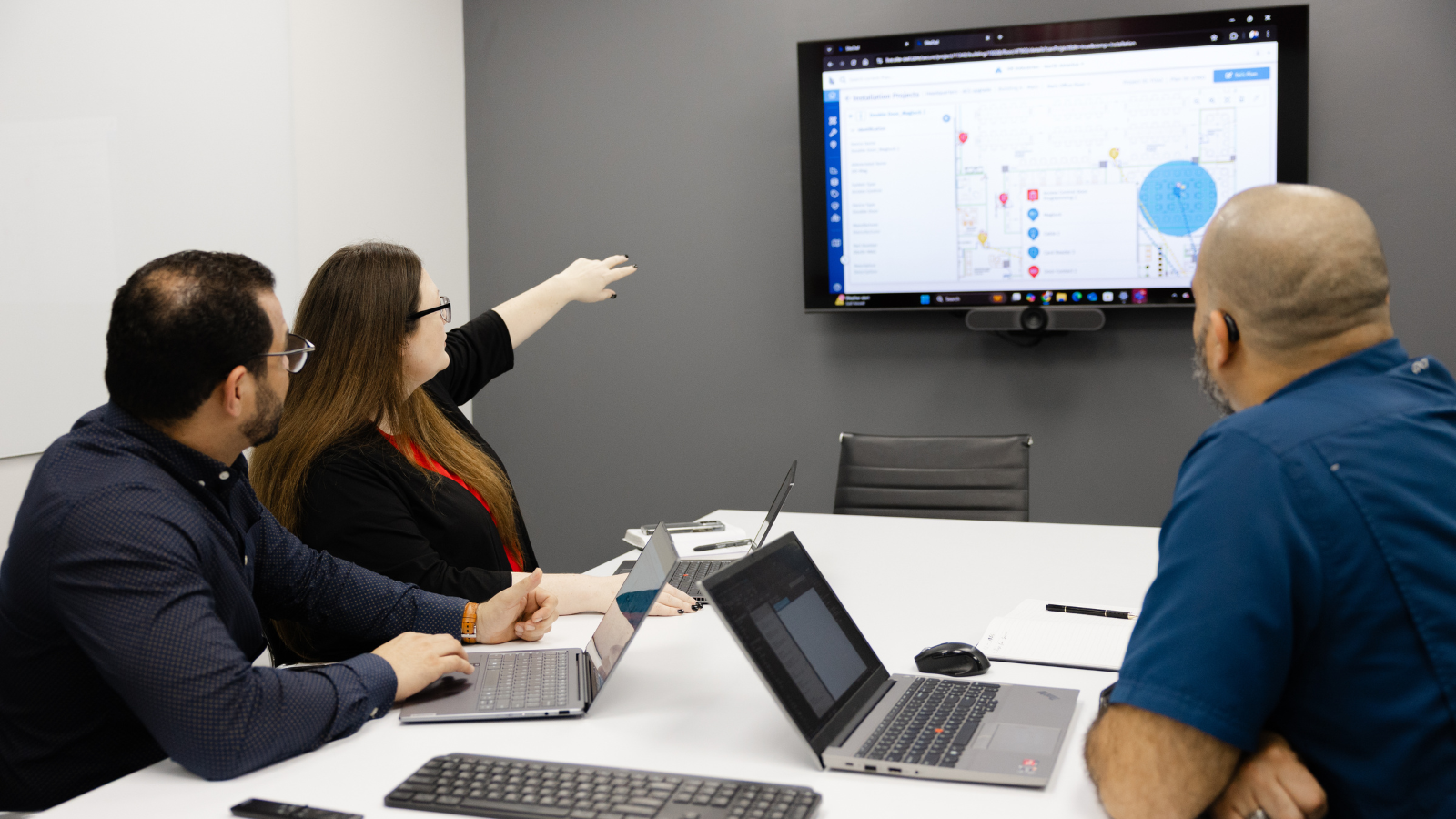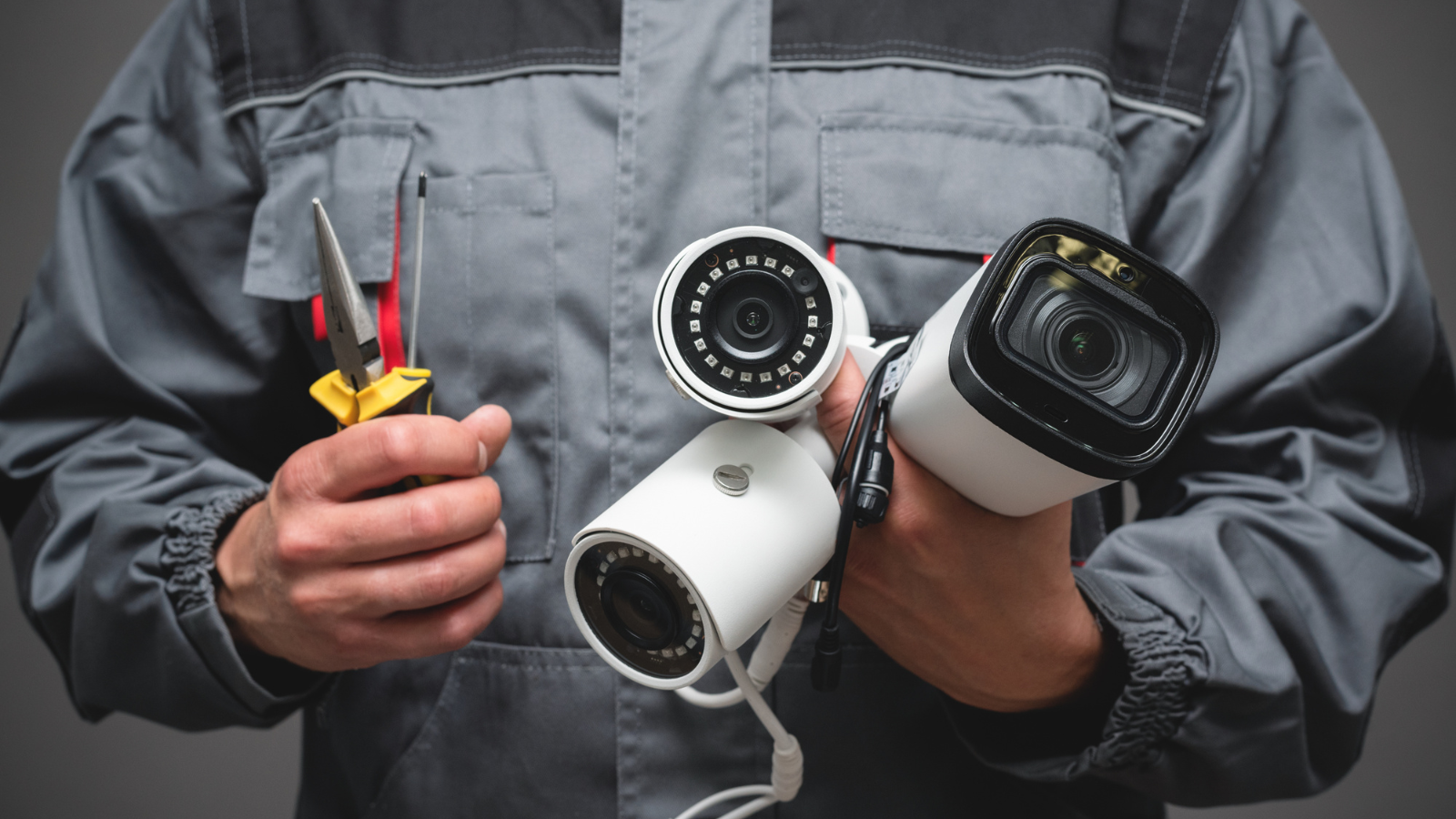Physical security is a top concern for manufacturing facilities nationwide, and for good reason. Manufacturing facilities often contain valuable assets, such as equipment, inventory, and intellectual property. Fortunately, 2024 brings
exciting opportunities to leverage technology and data for smarter physical security solutions.
Earlier this year, SiteOwl unveiled “
The Essential Guide to Physical Security Systems for Manufacturing Facilities
.” This comprehensive resource empowers security teams with a deeper understanding of available technologies and how to effectively employ them to safeguard their operations.
In this article, we’ll delve into the five pivotal trends that should be on the radar of manufacturing security professionals as they prepare for the upcoming year.
Let’s dive in!
Table of Contents
- Convergence of physical and digital
- Rise of the intelligent edge
- The data-driven decision revolution
- Frictionless access and identity management
- Cloud-based Lifecycle Management: A Game Changer for Manufacturers
1. Convergence of physical and digital
Silos are crumbling as physical, and IT teams recognize their interconnectedness. Expect more integrated security solutions that combine video surveillance, access control, and intrusion detection with robust cyber defenses. Think
cameras that double as AI-powered threat detectors and access systems that automatically lock down when suspicious cyber activity is detected.
While convergence is a trend that gets security professionals excited, it also requires a new way of thinking about security that transcends the traditional silos of physical and IT.
Here’s why this new way of thinking is crucial:
Convergence necessitates a unified strategy for cyber-physical security, addressing interconnected risks with shared threat intelligence and unified risk assessments.
Emerging technologies like IoT, smart buildings, and cyber-physical systems emphasize the need for convergence by blurring boundaries and creating new vulnerabilities.
Collaboration between physical and IT security teams fosters innovation, yielding AI-powered solutions, predictive maintenance, and improved security outcomes.
The convergence of physical and IT security is not just a trend; it’s a necessity. By embracing a new way of thinking, breaking down silos, and fostering collaboration, we can build a more robust and resilient security posture for the
future.
2. Rise of the intelligent edge
Processing power and AI capabilities are shifting from centralized servers to edge devices like cameras and sensors. This enables real-time analysis and instant response, reducing reliance on network connectivity and minimizing damage
from potential breaches. Imagine cameras identifying anomalies and triggering automated lockdowns before intruders even realize they’ve been spotted.
In a manufacturing facility, the shift of processing power and AI capabilities from centralized servers to edge devices like cameras and sensors has several practical applications, including real-time threat detection, automated
response, predictive maintenance, optimized operations, enhanced quality control, and reduced costs.
Additional benefits include:
Predictive Maintenance: Sensors embedded in equipment can analyze data in real-time, predicting potential failures before they occur. This allows for proactive maintenance, preventing costly downtime and ensuring production lines run
smoothly.
Optimized Operations: Edge AI can analyze production data to identify bottlenecks and inefficiencies. This allows for real-time adjustments to optimize production processes, maximize output, and minimize waste.
Enhanced Quality Control: AI-powered cameras can inspect products on the assembly line, identifying defects with unparalleled accuracy. This ensures high product quality, reduces recalls, and strengthens brand reputation.
The future of manufacturing security and efficiency lies at the edge. By embracing this transformative technology, manufacturers can create a more secure, efficient, and, ultimately, more competitive environment.
3. The data-driven decision revolution
Security is no longer just about gut instinct. Manufacturing facilities are drowning in data, and AI is unlocking its potential. Expect to see data-driven insights informing security strategies, from predicting equipment failure to
identifying suspicious employee behavior. Think algorithms analyzing worker movement patterns to pinpoint potential insider threats before they escalate.
In today’s data-rich landscape, manufacturing facilities are inundated with valuable information, and AI is the key to unlocking its full potential. Prepare for a new era where data-driven insights take the lead in shaping security
strategies. From predicting equipment failures to detecting suspicious employee behavior, cloud-based platforms are at the forefront.
Imagine algorithms meticulously analyzing worker movement patterns, enabling us to pinpoint potential insider threats before they have a chance to escalate. With SiteOwl, we harness the power of data to help you build smarter, more
proactive security solutions.
4. Frictionless access and identity management
Gone are the days of clunky keycards and forgotten PINs. Biometrics, facial recognition, and even wearables are streamlining access control, offering a more secure and user-friendly experience. Imagine employees seamlessly entering
secured areas with a wave of their hands, eliminating the risk of lost credentials and unauthorized access.
In a manufacturing facility, the transition from traditional access methods to advanced authentication technologies like biometrics, facial recognition, and wearables offers several significant advantages:
- Enhanced Facility Security: Biometrics and facial recognition provide superior security in a manufacturing facility compared to traditional keycards or PINs, ensuring that only authorized individuals can access secure areas.
- User-Friendly Facility Access: These modern access control methods offer convenience within the facility, allowing employees to effortlessly enter secured areas with a simple wave or facial recognition.
-
Prevention of Lost Credentials in the Facility: With biometrics and wearables, the facility minimizes the risk of lost access cards or forgotten PINs. Employees always have their biometric data or wearable devices with them,
ensuring reliable access.
- Reduced Unauthorized Access in the Facility: Advanced access control technologies minimize the risk of unauthorized entry within the manufacturing facility, enhancing safety and control.
Frictionless access and identity management sound promising, but without a proactive lifecycle management program, the full potential of these technologies may remain unrealized, leaving security and efficiency opportunities untapped in
the manufacturing facility.
5. Cloud-based Lifecycle Management: A Game Changer for Manufacturers
Cloud-based lifecycle management (CLM) is rapidly transforming the manufacturing landscape, offering a powerful suite of tools and capabilities that streamline processes, enhance visibility, and boost security throughout the product
journey.
The SiteOwl platform empowers security professionals with the tools they need to manage and monitor their entire physical security infrastructure from a single, unified interface. By seamlessly bridging the gap between physical and IT
security, SiteOwl ensures that your assets are safeguarded comprehensively, providing you with unparalleled visibility and control over your security landscape.
The SiteOwl platform is a game-changer for security professionals in manufacturing facilities, and here’s why:
- Centralized Management: Streamlining security operations by consolidating physical security into a single, user-friendly interface.
- Seamless Integration: Bridging the gap between physical and IT security, ensuring comprehensive threat management.
- Holistic Asset Protection: Monitoring all physical security assets efficiently, from cameras to access control systems, with a 360-degree view of security.
- Unmatched Visibility: Real-time insights and immediate alerts provide proactive security monitoring.
- Empowered Control: The platform puts security control back in your hands, enabling swift responses and enhancing confidence in addressing security challenges.
The future of physical security for manufacturing facilities is undoubtedly headed towards a convergence of physical and IT security, driven by the increasing interconnectedness of physical and digital systems. This convergence will
enable a more holistic and comprehensive approach to security, addressing both physical and cyber threats simultaneously.
Ready to take your security to the next level? Download our ebook, “The Essential Guide to Modern Security Solutions for Manufacturing Facilities,” and discover how SiteOwl can empower your security team.

Su Subburaj
Su is SiteOwl's CMO and leads all marketing and communications. Su has extensive strategy and management consulting experience and previously consulted for 3Sixty Integrated where she gained an in-depth understanding of digital transformation challenges in the physical security industry. When not working on strategies to expand SiteOwl's footprint, Su enjoys bad karaoke, weightlifting and traveling.









